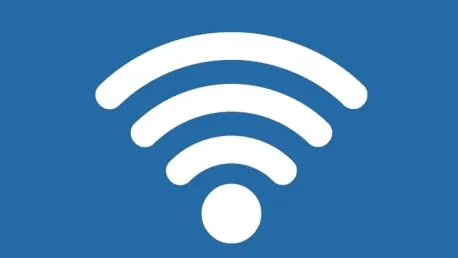The decision by the White House to integrate Elon Musk’s Starlink Wi-Fi into its complex has sparked considerable debate among cybersecurity professionals and government IT experts. Intended to enhance connectivity, this move has generated scrutiny due to the perceived rush in its implementation and the related security concerns. The issue at hand isn’t merely about employing a new technology but involves the broader implications it carries for national security and federal IT protocols.
Controversial Decision
Under the Trump administration, the Department of Government Efficiency (DOGE) has recently faced backlash for its activities involving extensive evaluations of digital systems and accessing sensitive information without the necessary clearance or training. Among these controversial actions is the endorsement of SpaceX’s Starlink Wi-Fi for the White House complex. Press Secretary Karoline Leavitt endorsed the service’s donation by SpaceX, viewing it as a step towards improved connectivity. However, this optimism has not been shared universally, especially among cybersecurity experts who have serious reservations about the service’s security and actual need within a high-security environment.
The endorsement of Starlink by DOGE has raised several red flags due to the already questionable practices of the department. The primary concerns revolve around the lack of proper clearance and training in accessing sensitive data. Uncertainties clutter the debate regarding the necessity of such a sophisticated satellite-based Wi-Fi system in a space that is supposed to maintain impenetrable security levels.
Security Risks
Introducing Starlink Wi-Fi into an environment as secure as the White House has understandably provoked alarm among cybersecurity experts. Nicholas Weaver of the nonprofit International Computer Science Institute and UC Davis has accused the move of being an example of “shadow IT,” a term used to describe IT systems implemented without oversight, consequently circumventing established security controls. Even if the top-secret data remains on separate networks, the White House’s unclassified network holds a wealth of sensitive information that could be vulnerable to breaches.
Former NSA hacker Jake Williams added weight to these concerns by stressing the importance of strict compliance with the White House Communication Agency (WHCA) requirements. If Starlink’s integration falls short of these stringent standards, it could create blind spots in network monitoring. Such gaps make the system susceptible to breaches, particularly in relation to unauthorized access facilitated by remote management tools. The potential vulnerabilities underline the need for comprehensive oversight and rigorous adherence to established protocols in any integration efforts.
Inefficiency Concerns
The question of whether Starlink is necessary within the White House complex carries substantial weight, given its primary use for areas that lack reliable terrestrial internet services. The current setup involves a Starlink panel installed miles away at a data center, which then routes connectivity over existing fiber lines. This setup has drawn criticism for its inefficiency. Nicholas Weaver articulated these concerns by describing the current approach as lacking practical sense, arguing that traditional ISPs would serve more effectively in locations already equipped with fiber-optic internet services.
Experts contend that employing Starlink in an environment like the White House, which already possesses robust terrestrial internet infrastructure, seems misplaced and redundant. Utilizing Starlink in such circumstances appears more of a showcase for a technological marvel than a necessity, potentially complicating well-established systems. The peculiar setup only adds to the inefficiency debate, raising valid questions about the judicious use of cutting-edge technology where simpler, established solutions prevail.
Corporate Dependence
Aside from immediate technical and procedural concerns, the long-term reliance on a service controlled by Elon Musk presents further apprehensions. The recent turmoil in Europe concerning the potential withdrawal of Starlink services from Ukraine has heightened these fears. Musk’s ensuing assurance that SpaceX would never use Starlink as leverage did little to alleviate concerns about the stability and security of federal reliance on a corporate-controlled service.
Depending on Starlink could create vulnerabilities linked to the service’s stability and the strategic intentions underlying its provision. Federal reliance on a single corporate entity for critical communication services feels precarious, especially given the unpredictable nature of corporate decisions and external pressures. Integrating such a corporate-controlled service in high-security environments like the White House complex could compound existing risks and introduce unforeseen variables dependent on corporate stability and executive decisions.
Precedent-Setting Implications
The White House’s decision to integrate Elon Musk’s Starlink Wi-Fi into its facilities has ignited considerable debate among cybersecurity professionals and government IT experts. While the intent behind this move is to enhance connectivity and ensure more efficient communication, the rapid implementation has raised concerns regarding the safety and security protocols involved. Critics argue that the introduction of this new technology without thorough vetting may pose significant risks to national security. The debate touches on the broader implications of adopting innovative technologies within highly sensitive and secure environments. The integration of Starlink Wi-Fi is not just about improving Internet speed or access; it begs questions about federal IT standards and how new technologies are evaluated and deployed. Is the rush worth the potential vulnerabilities it might expose? This scenario underscores the delicate balance between innovation and security in governmental operations and cyber infrastructure.









